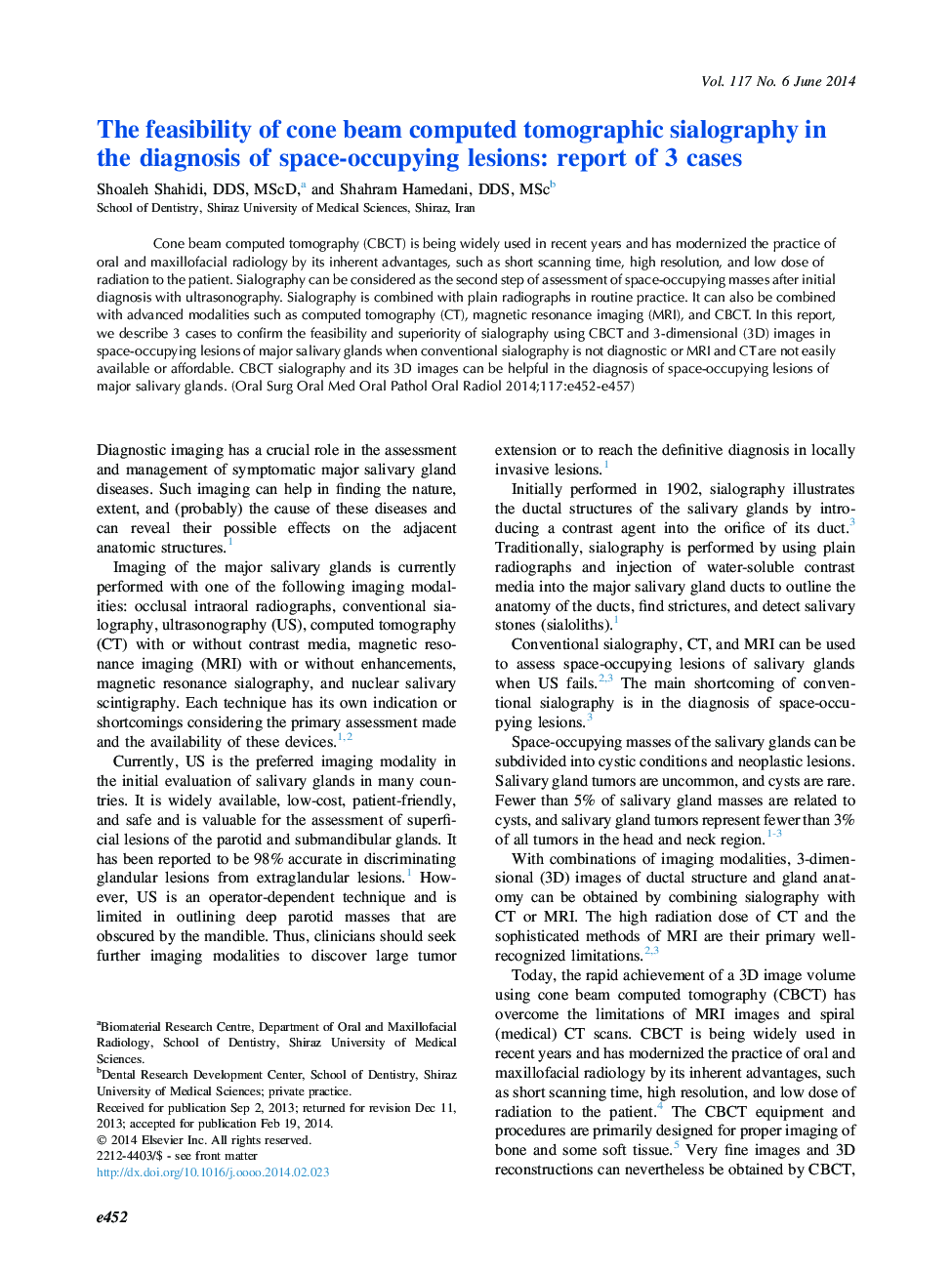| Article ID | Journal | Published Year | Pages | File Type |
|---|---|---|---|---|
| 6056863 | Oral Surgery, Oral Medicine, Oral Pathology and Oral Radiology | 2014 | 6 Pages |
Cone beam computed tomography (CBCT) is being widely used in recent years and has modernized the practice of oral and maxillofacial radiology by its inherent advantages, such as short scanning time, high resolution, and low dose of radiation to the patient. Sialography can be considered as the second step of assessment of space-occupying masses after initial diagnosis with ultrasonography. Sialography is combined with plain radiographs in routine practice. It can also be combined with advanced modalities such as computed tomography (CT), magnetic resonance imaging (MRI), and CBCT. In this report, we describe 3 cases to confirm the feasibility and superiority of sialography using CBCT and 3-dimensional (3D) images in space-occupying lesions of major salivary glands when conventional sialography is not diagnostic or MRI and CT are not easily available or affordable. CBCT sialography and its 3D images can be helpful in the diagnosis of space-occupying lesions of major salivary glands.
